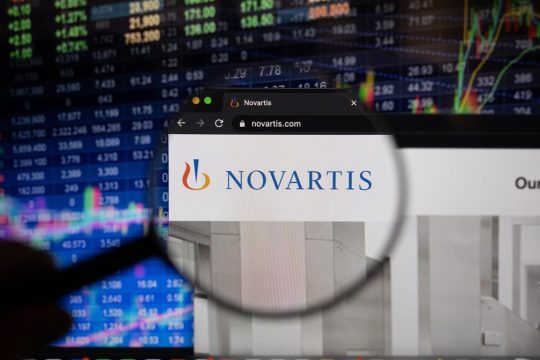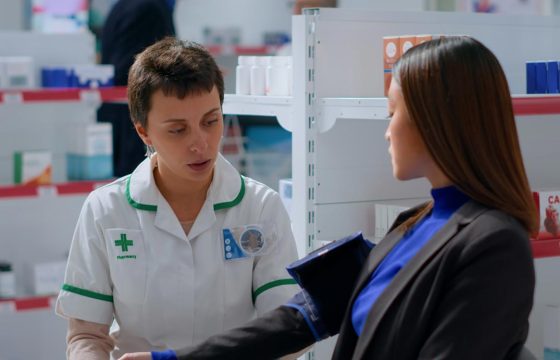Advertisment
Zolgensma data shows rapid, significant, clinically meaningful benefit in SMA including prolonged event-free survival, motor milestone achievement and durability now up to 5 years post-dosing. – Novartis
AveXis, a Novartis company, announced a one-time infusion of Zolgensma (onasemnogene abeparvovec-xioi) showed rapid, significant and clinically meaningful therapeutic benefit in patients with spinal muscular atrophy (SMA) across a range of studies , including in patients treated presymptomatically, and sustained durability in patients now up to five years post-dosing and some patients more than five years of age . The STR1VE-US study findings are being presented during a virtual Clinical Trial Session conducted by the Muscular Dystrophy Association (MDA), scheduled after the 2020 MDA Annual Conference was cancelled due to COVID-19. The accepted posters for SPR1NT, START long-term follow up and cumulative safety data will be published online by MDA in the coming weeks.
Interim data from the ongoing SPR1NT study continue to show patients achieved age-appropriate motor milestones when treated with Zolgensma presymptomatically. Most patients (7/8) with two copies of SMN2 who achieved the ability to sit independently did so within the World Health Organization window of normal development. The six remaining patients in this cohort of 14 patients have not yet passed the developmental window. The importance of independent sitting is that it allows for the potential development and integration of the cognitive, sensory and motor skills that are important for functional independence and social development. Additionally, nearly all patients were fed orally and required no feeding support. Most remained within the age-appropriate weight range. No patients required ventilatory support of any kind.
SMA Type 1 patients experienced rapid, sustained and clinically meaningful improvements in motor function in the completed pivotal STR1VE-US study . In STR1VE-US, nearly all (91%) patients met the co-primary efficacy endpoint of event-free survival at 14 months, and more than half (59%) of patients met the co-primary efficacy endpoint of sitting for ?30 seconds at 18 months of age, a milestone never achieved in the natural history of SMA Type 1. Importantly, nine of 22 patients demonstrated the “ability to thrive” at 18 months of age. As the goal of treatment for SMA Type 1 moves beyond survival and motor milestone achievement, the STR1VE-US trial is the first to incorporate this stringent composite endpoint – inclusive of functions of swallowing, feeding and age-appropriate weight maintenance – and demonstrate remarkable achievements in symptomatic patients with SMA Type 1, the most prevalent form of the disease accounting for 60% of SMA diagnoses.
New data from the START long-term follow-up study continue to demonstrate the durability of a single, one-time dose of Zolgensma in patients now up to five years post-dosing and some patients more than five years of age. All patients in this study who received the therapeutic dose were alive and free of permanent ventilation and continued to maintain developmental milestones, including two patients who achieved the new milestone of standing with assistance during the long-term follow-up period. Cumulative safety data from patients treated with intravenous Zolgensma in clinical trials, U.S. managed access program, the RESTORE global registry and commercial experience were consistent with previously-reported safety information. Reported adverse events (AEs) were monitorable and manageable, and the overall benefit-risk safety profile remains favorable.
SPRINT data as of December 31, 2019 : SPR1NT is an ongoing Phase III, open-label, single-arm, multi-center trial designed to evaluate the safety and efficacy of a one-time intravenous (IV) infusion of Zolgensma in presymptomatic patients with SMA and two or three copies of SMN2 who are <=6 weeks of age. Fourteen patients with two copies of SMN2 and 15 patients with three copies of SMN2 were treated. As of December 31, 2019, the mean age of patients in the two-copy cohort was 11.2 months (6.0-18.6 months of age) at last follow up. For the three-copy cohort, the mean age was 9.7 months (3.3-15.1 months of age). Nearly all patients were alive and free of ventilatory support of any kind. All patients were fed orally and required no feeding support. Most remained within (at or above third percentile) the gender and age-appropriate weight range. All patients in the two-copy cohort achieved or maintained a Children's Hospital of Philadelphia Infant Test of Neuromuscular Disorders (CHOP INTEND) score of greater than 50. Thirteen patients achieved a CHOP INTEND score of greater than 58, including nine patients who achieved a score of greater than 58 for three consecutive visits. According to natural history, untreated patients with SMA Type 1 almost never achieve a CHOP INTEND score greater than 40.
Of patients with two copies of SMN2 , eight patients so far were able to sit independently for at least 30 seconds (range 5.7–11.8 months of age), with seven of these achieving independent sitting within the range of normal development. Four patients so far were able to walk independently (range 12.2–18.3 months of age). Patients in this cohort who have not achieved these milestones yet are still within the normal age development window for these milestones. Of the patients with three copies of SMN2 , four patients were able to stand alone without support for at least three seconds (9.5–12.4 months of age) and three patients were able to walk independently (12.2–15.1 months of age), all achieved within the range of normal development. Patients in this cohort who have not achieved these milestones yet are still within the normal age development window for these milestones. All patients experienced at least one adverse event (AE) after dosing of which 17 were considered treatment-related. Overall, the most common AEs were pyrexia (30%), upper respiratory tract infection (23%), constipation (17%), and nasopharyngitis (17%), which are consistent with events experienced by children with SMA and the general population. Six patients were reported to have serious adverse events (SAEs), none of which were assessed by the investigator and AveXis to be related to treatment.
STR1VE-US – Study Complete : STR1VE-US is a part of the global Phase III STR1VE clinical program. This includes open-label, single-arm, single-dose, multi-center trials (STR1VE-US in the United States, STR1VE-EU in Europe and STR1VE-AP in Asia Pacific) designed to evaluate the efficacy and safety of a single, one-time IV infusion of Zolgensma in symptomatic patients with SMA Type 1 who are less than six months of age at the time of gene therapy, with one or two copies of the SMN2 backup gene and who have bi-allelic SMN1 gene deletion or point mutations. In STR1VE-US, 20 of 22 patients (91%) met the co-primary efficacy endpoint of event-free survival at 14 months, and 13 of 22 patients (59%) met the co-primary efficacy endpoint of functional sitting for greater than 30 seconds at 18 months of age. Thirteen patients (59.1%) achieved the developmental milestone of functional independent sitting for greater than 30 seconds (P<0.0001 vs natural history) at the 18 months of age study visit. A 14th patient achieved the milestone of sitting independently for 30 seconds at 16 months of age, but this milestone was not confirmed at the month 18 visit. Fifteen patients (68.2%) did not require non-invasive ventilatory support at any point during the study. Eighteen of 22 patients (81.8%) did not use ventilatory support (as assessed by Trilogy BiPAP data) at 18 months of age. STR1VE-US is the first trial in symptomatic patients with SMA Type 1 to incorporate the stringent composite endpoint of “ability to thrive.” Of the 22 patients, nine (40.9%) achieved this co-secondary endpoint at 18 months of age (P<0.0001 vs natural history), including 19 patients (86.4%) who did not receive nutrition through any feeding tube or other non-oral method, 14 patients (63.6%) who maintained weight (greater than third percentile) consistent with gender and age and 12 patients (54.5%) who were able to tolerate thin liquid. In STR1VE-US, patients achieved rapid and sustained improvement in motor function unseen in natural history. CHOP INTEND scores increased by an average of 6.9 points at one month (N=22), 11.7 points at three months (N=22) and 14.6 points at six months (N=20) after gene therapy treatment. Twenty-one patients (95.5%) achieved a CHOP INTEND score greater than 40, and 14 (63.6%) achieved a CHOP INTEND score greater than 50.
.
No new deaths have been reported. As previously reported, one patient died from respiratory failure six months after receiving Zolgensma, which was assessed as due to underlying SMA and unrelated to treatment by the investigator and an independent Data Safety Monitoring Board. As previously reported, one patient discontinued (withdrew consent) at 11.9 months of age; this patient required permanent ventilation prior to withdrawal of consent. All 22 treated patients were reported to have at least one AE, of which 12 were considered by the investigator to be related to Zolgensma. Ten patients were reported to have SAEs, three of which were assessed by the investigator and AveXis to be related to treatment. Overall, the most frequently reported AEs were pyrexia (54.5%), upper respiratory tract infection (50.0%), constipation (40.9%), and scoliosis (40.9%), which are consistent with events experienced by children with SMA and the general population. AEs were manageable and consistent with the known safety profile of Zolgensma.
START Long-Term Follow-Up (LTFU) Data as of December 31, 2019 : START was a Phase 1 study evaluating the safety and efficacy of a one-time IV infusion of Zolgensma in SMA Type 1 patients with the onset of clinical symptoms before six months of age. At the close of the 24-month study, all 12 patients in cohort 2 (targeted therapeutic dose) were alive and free of permanent ventilation. Without treatment, most of these patients would not survive past the age of two or would require permanent ventilation. Ten of these 12 patients voluntarily enrolled in an ongoing observational long-term follow-up of the START study. START LTFU is an ongoing, observational, long-term follow-up study of patients who completed START and electively enrolled in the study. As of December 31, of the 10 patients from cohort 2 who enrolled in LTFU, all are alive and free of permanent ventilation. No previously achieved motor milestone has been lost during the follow up period. Two patients gained the new milestone of standing with assistance (neither of whom have received treatment with nusinersen) during the follow up period. The mean age of patients was 4.8 years (range 4.3–5.6 years) and the mean time since gene therapy treatment was 4.5 years (range 4.1–5.2 years). Six out of 10 patients (60%) are not currently receiving concomitant therapy with nusinersen. No patient who was free of ventilatory support at the end of the study has initiated new mechanical respiratory support during the follow up period. Six out of the 10 patients (60%) do not require regular, daily respiratory support more than four years after dosing.There were no new treatment related SAEs and no AEs of special interest occurred during the long-term follow up study.
Cumulative Safety Data as of December 31, 2019 : Safety data from post-marketing experience (192 patients) was consistent with previously observed safety data across all clinical investigations of IV Zolgensma (100 patients) and the U.S. managed access program and the RESTORE global patient registry (43 patients). Data reviewed from 335 patients indicated that nearly all patients experienced AEs, however, most were not serious and were unrelated to treatment. In general, AEs associated with Zolgensma are monitorable and manageable: (1) liver transaminase elevations should be monitored through liver function tests and managed through the use of prophylactic prednisolone; (2) thrombocytopenia events have been transient and resolved without medical intervention and can be monitored through platelet counts; and (3) reported cardiac events have been heart rate changes and laboratory abnormalities without associated clinical sequelae. Troponin I should be monitored.
A thorough analysis has been completed to assess sensory abnormalities indicative of dorsal root ganglia inflammation. While this remains a preclinical finding and clinical events have not been reported, AveXis has implemented a monitoring plan in clinical trials to evaluate and characterize this further. No new deaths reported; two deaths were previously reported after Zolgensma dosing (STR1VE-US and STR1VE-EU), both of which were considered unrelated to treatment based on autopsy findings.
Novartis will conduct a conference call with investors to discuss this news release on Monday, March 30, 2020 at 3 p.m. Central European Time and 9 a.m. Eastern Time. A simultaneous webcast of the call for investors and other interested parties may be accessed by visiting the Novartis website. A replay will be available after the live webcast by visiting https://www.novartis.com/investors/event-calendar.





